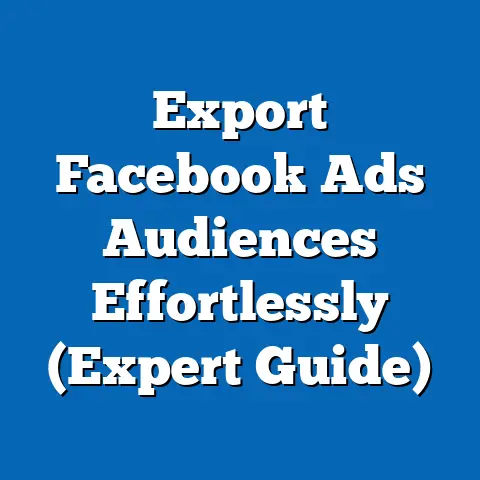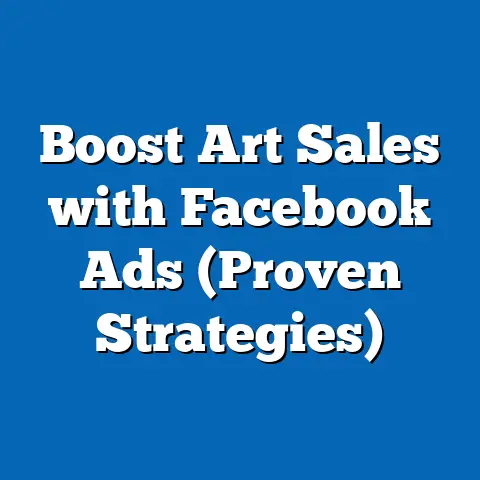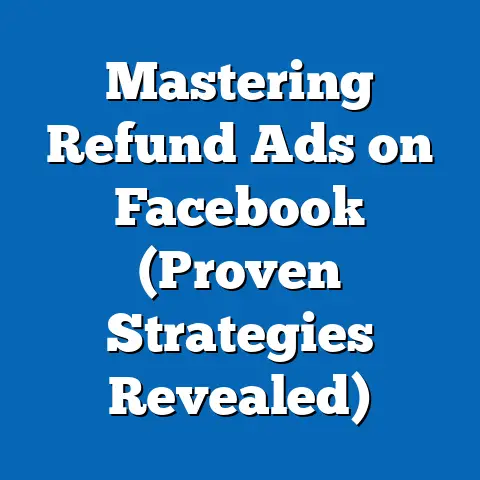Boost iPhone Facebook App Downloads (Proven Strategies)
In the ever-evolving landscape of mobile app marketing, understanding and leveraging seasonal trends can be a game-changer for boosting app downloads, particularly for platforms like the Facebook app on iPhone. Seasonal trends—recurring patterns tied to holidays, cultural events, and societal shifts—offer unique opportunities to align marketing strategies with user behavior and sentiment. This article explores how tapping into these trends can drive downloads of the Facebook app, delving into defining characteristics of seasonal marketing, historical context of app download surges, and the broader societal implications of such strategies.
Section 1: Understanding Seasonal Trends in App Marketing
Defining Characteristics of Seasonal Trends
Seasonal trends in app marketing refer to predictable fluctuations in user behavior and app downloads influenced by specific times of the year, such as holidays, academic calendars, or cultural events. These trends are often driven by heightened consumer activity, emotional resonance, and societal norms tied to particular seasons. For instance, downloads for social media apps like Facebook often spike during holidays like Christmas or Thanksgiving, when users are more likely to connect with friends and family online.
These trends are characterized by urgency and temporality, as they are time-bound and often tied to specific campaigns or promotions. Marketers can capitalize on these moments by creating content and offers that align with the emotional tone of the season—whether it’s the joy of the holidays or the excitement of a new school year. Additionally, seasonal trends often vary by region and culture, requiring a tailored approach to resonate with diverse audiences.
Historical Context of Seasonal App Download Surges
Historically, the rise of smartphones and app stores has amplified the impact of seasonal trends on app downloads. According to Statista, global app downloads often peak during the fourth quarter, coinciding with major holidays like Christmas and New Year’s, when many users receive new devices as gifts. For instance, in 2022, global app downloads reached over 35 billion in Q4, a significant increase compared to other quarters.
The launch of the iPhone in 2007 and the subsequent growth of the App Store created a fertile ground for seasonal marketing. Early data from Apple revealed that app downloads surged during holiday seasons as new iPhone users explored the platform. Over the years, social media apps like Facebook have consistently ranked among the top downloaded apps during these periods, reflecting the app’s role in facilitating seasonal connectivity.
Significant events, such as the COVID-19 pandemic, have also reshaped seasonal trends. During 2020, app downloads for social media platforms spiked during lockdowns, particularly around holidays when physical gatherings were restricted. This historical shift underscores the adaptability of seasonal marketing to broader societal changes, a factor that remains critical for boosting Facebook app downloads today.
Societal Implications of Seasonal Marketing
Seasonal marketing strategies have far-reaching implications for society, particularly in how they influence digital behavior and connectivity. By promoting app downloads during peak seasons, platforms like Facebook reinforce their role as central hubs for social interaction, especially during times of celebration or crisis. However, this also raises concerns about data privacy and screen time, as increased app usage can exacerbate issues like digital addiction or exposure to targeted advertising.
Moreover, seasonal campaigns often target specific demographics, such as younger generations during back-to-school seasons or families during holidays, which can perpetuate consumerism and societal pressure to engage digitally. While these strategies drive business outcomes, they also shape cultural norms around technology use, making it essential for marketers to balance profitability with ethical considerations.
Section 2: Proven Strategies to Boost iPhone Facebook App Downloads
Strategy 1: Leveraging Holiday Campaigns
Holidays are a prime opportunity to boost Facebook app downloads among iPhone users, as they align with heightened social activity and emotional engagement. Campaigns centered around major holidays like Christmas, Thanksgiving, or Valentine’s Day can tap into users’ desire to share moments with loved ones. For instance, creating holiday-themed ads that highlight Facebook’s features—like photo sharing or group video calls—can resonate deeply with iPhone users during these times.
Data from Sensor Tower indicates that social media app downloads often increase by 20-30% during the holiday season. To capitalize on this, marketers can offer limited-time promotions, such as exclusive holiday filters or stickers within the app, encouraging users to download or re-engage. Collaborating with influencers to showcase how they use Facebook during holidays can also amplify reach and authenticity.
It’s crucial to tailor campaigns to cultural nuances, as holiday traditions vary globally. For example, a campaign targeting Lunar New Year in Asia might focus on family reunions and traditions, while a Christmas campaign in the U.S. could emphasize gift-sharing or virtual gatherings. Testing and optimizing ad creatives for different regions can ensure maximum impact.
Strategy 2: Capitalizing on Back-to-School Seasons
The back-to-school season, typically in late summer or early fall, is another critical window for boosting app downloads, particularly among younger iPhone users like Gen Z and Millennials. This period is marked by a return to academic and social routines, making it an ideal time to position Facebook as a tool for staying connected with peers or joining student groups. Marketers can create targeted ads that highlight features like Facebook Groups for study collaboration or event planning for campus activities.
According to a 2021 report by App Annie, app downloads in the education and social categories spike by 15% during August and September in the U.S. Offering incentives, such as partnerships with educational brands or discounts for students, can further drive downloads. Additionally, focusing on mobile-first ad formats, like Instagram Stories or in-app ads within the Apple ecosystem, ensures visibility among iPhone users during this season.
Generational diversity plays a role here, as younger users may prioritize different app features compared to older students or parents. While Gen Z might value Facebook Marketplace for buying affordable textbooks, parents might use the app to join school-related groups. Tailoring messaging to these distinct needs can enhance campaign effectiveness.
Strategy 3: Aligning with Cultural and Sporting Events
Cultural and sporting events, such as the Super Bowl, Olympics, or regional festivals, provide unique opportunities to boost app downloads by tapping into collective excitement. These events often drive social media engagement as users share reactions, photos, and live updates. Positioning Facebook as the go-to platform for real-time event discussions can attract new iPhone users and re-engage existing ones.
For example, during the 2022 FIFA World Cup, social media apps saw a significant uptick in downloads, with Facebook benefiting from its global user base. Marketers can create event-specific campaigns, such as live watch parties or themed content, to encourage downloads. Partnering with sports influencers or creating branded hashtags can also amplify visibility during these periods.
However, marketers must be mindful of cultural sensitivities and avoid over-commercializing sacred or traditional events. A balanced approach that celebrates the event while subtly promoting the app can build trust and authenticity. This strategy also benefits from geo-targeting, ensuring that campaigns are relevant to specific regions hosting or celebrating the event.
Strategy 4: Utilizing Seasonal Push Notifications and In-App Features
Push notifications and in-app features tailored to seasonal trends can re-engage existing users and prompt new downloads among iPhone users. For instance, sending reminders about holiday events or offering seasonal app updates—like Halloween-themed profile frames—can create a sense of urgency and relevance. These small but impactful features keep the app top-of-mind during key periods.
Data from Localytics shows that personalized push notifications can increase app engagement by up to 50%. Combining this with App Store Optimization (ASO) strategies, such as updating app descriptions with seasonal keywords (e.g., “holiday connection” or “back-to-school networking”), can improve visibility in the Apple App Store. Ensuring that notifications are non-intrusive and value-driven is critical to avoid user fatigue.
This strategy also allows for A/B testing to determine which seasonal messages resonate most with different demographics. For example, younger users might respond to gamified holiday challenges within the app, while older users might appreciate reminders about family events. Continuous optimization based on user feedback can refine these efforts over time.
Strategy 5: Partnering with Seasonal Trends in Technology Adoption
Seasonal trends in technology adoption, such as the release of new iPhone models or holiday gifting, create natural spikes in app downloads as users set up their devices. Apple typically releases new iPhones in September, followed by a surge in App Store activity as users explore new apps. Positioning Facebook as a must-have app during this onboarding phase can significantly boost downloads.
Marketers can collaborate with Apple or third-party retailers to pre-install or prominently feature the Facebook app on new devices during the holiday gifting season. Additionally, running targeted ads within the App Store during launch windows can capture the attention of early adopters. Highlighting compatibility with the latest iOS features, such as augmented reality or privacy tools, can further incentivize downloads.
This strategy also ties into generational dynamics, as younger users like Gen Z are often early adopters of new tech, while older generations might receive iPhones as gifts during holidays. Crafting messages that appeal to both groups—emphasizing ease of use for older users and cutting-edge features for younger ones—can maximize reach. However, marketers must navigate Apple’s strict privacy policies, such as App Tracking Transparency (ATT), to ensure compliance while targeting users effectively.
Section 3: Generational Dynamics and Seasonal Trends
Intersections Between Generations and Seasonal Behavior
Generational differences play a significant role in how seasonal trends impact app downloads. Baby Boomers, Gen X, Millennials, and Gen Z each engage with social media platforms like Facebook in unique ways, influenced by their life stages, values, and tech proficiency. Understanding these nuances is critical for tailoring seasonal campaigns to boost iPhone downloads.
For instance, Baby Boomers and Gen X are more likely to use Facebook during holidays to reconnect with family or share nostalgic content, while Millennials might focus on holiday shopping via Marketplace. Gen Z, on the other hand, often engages with the app during cultural or sporting events, prioritizing real-time interaction over long-term connection. Data from Pew Research (2022) shows that while 70% of Gen Z uses Facebook, their engagement spikes during trend-driven moments rather than traditional holidays.
Seasonal marketing must account for these differences by segmenting audiences and customizing content. While a holiday campaign for Boomers might emphasize family photo albums, a back-to-school campaign for Gen Z could highlight meme-sharing or event planning. Avoiding one-size-fits-all messaging ensures broader appeal across generations.
Technological and Cultural Factors
Technological adoption varies widely across generations, influencing how seasonal campaigns are received. Younger generations, accustomed to rapid tech advancements, are more likely to download apps on new iPhones during seasonal tech releases. Older generations, however, may require more guidance or incentives to adopt updates or re-download apps during holidays.
Cultural factors also shape seasonal engagement. For example, Millennials and Gen Z are more attuned to global cultural events like Coachella or Pride Month, often using Facebook to join related groups or follow live updates. In contrast, older generations might prioritize local or traditional holidays, using the app for personal updates rather than public interaction. Marketers must blend technological ease with cultural relevance to craft effective seasonal strategies.
Economic factors further complicate generational responses to seasonal trends. Younger users, often on tighter budgets, may respond to free seasonal features or discounts, while older users with more disposable income might engage with premium or partnered content. Balancing these economic realities with seasonal messaging can optimize campaign outcomes.
Section 4: Broader Implications for Society and the Workplace
Societal Impact of Seasonal App Download Strategies
The push to boost Facebook app downloads through seasonal trends has significant societal implications, particularly in reinforcing digital connectivity as a cultural norm. While this fosters community during holidays or events, it also amplifies concerns about data privacy, especially with Apple’s focus on user tracking transparency. Marketers must navigate these tensions by prioritizing ethical advertising and transparent data practices.
Additionally, seasonal campaigns often drive consumerism, encouraging users to engage with brands or purchase through platforms like Marketplace during peak shopping periods. This can perpetuate societal pressures to spend, particularly among younger generations. A responsible approach to seasonal marketing—emphasizing value over volume—can mitigate these effects while still driving downloads.
Finally, the increased reliance on social media during seasonal peaks raises questions about mental health and digital well-being. Studies from the American Psychological Association (2021) suggest that holiday screen time can contribute to stress or feelings of isolation if not balanced with offline interaction. Marketers should consider campaigns that encourage meaningful connection over passive consumption to address these concerns.
Workplace Implications for App Marketers
For app marketing teams, leveraging seasonal trends requires agility and cross-functional collaboration. Teams must align on campaign timelines, creative assets, and data analytics to execute timely strategies that boost downloads. This often involves adapting to tight seasonal windows, requiring efficient workflows and real-time optimization.
Seasonal campaigns also impact workplace diversity, as teams must understand cultural and generational nuances to create inclusive content. Hiring diverse talent or consulting regional experts can ensure campaigns resonate globally. Moreover, the pressure to deliver results during peak seasons can strain teams, necessitating strong leadership and mental health support to maintain productivity.
From a business perspective, seasonal download surges can inform long-term strategies for user acquisition and retention. Analyzing which campaigns drive the most installs or re-engagement can guide budget allocation and feature development. However, over-reliance on seasonal spikes risks neglecting off-peak engagement, a balance that marketers must carefully manage.
Section 5: Forward-Looking Insights and Uncertainties
Future Trends in Seasonal App Marketing
Looking ahead, seasonal app marketing is likely to evolve with advancements in technology and shifts in user behavior. The integration of artificial intelligence (AI) and machine learning could enable hyper-personalized seasonal campaigns, predicting user preferences based on past engagement. For instance, AI-driven ads might suggest holiday group chats or event pages tailored to individual interests, further boosting downloads.
Emerging technologies like augmented reality (AR) could also enhance seasonal features within the Facebook app, offering immersive holiday experiences or virtual event spaces. As Apple continues to innovate with iOS updates, ensuring compatibility and leveraging new tools will be critical for maintaining visibility in the App Store. However, stricter privacy regulations may pose challenges, requiring marketers to find creative ways to target users without invasive tracking.
Generational shifts will also shape future strategies, as Gen Alpha (born after 2010) begins to engage with social media. This tech-native cohort will likely prioritize interactive, gamified seasonal content, pushing marketers to innovate beyond traditional ads. Keeping pace with these evolving preferences will be essential for sustained growth in downloads.
Acknowledging Uncertainties
Despite these opportunities, uncertainties remain in predicting seasonal trends and user behavior. Economic downturns or global crises, like pandemics, can disrupt traditional patterns, as seen in 2020 when holiday downloads spiked due to lockdowns. Marketers must remain adaptable, using real-time data to pivot strategies as needed.
Additionally, Apple’s evolving privacy framework and potential changes in App Store policies could impact targeting precision and campaign effectiveness. The growing emphasis on user control over data might reduce the efficacy of personalized ads, a cornerstone of seasonal marketing. Preparing contingency plans and diversifying acquisition channels can mitigate these risks.
Finally, the long-term impact of seasonal marketing on user retention remains unclear. While download spikes are valuable, ensuring sustained engagement beyond the season is a persistent challenge. Investing in user experience and community-building features within the app can help convert seasonal users into loyal ones, though outcomes will vary by demographic and region.
Conclusion
Tapping into seasonal trends offers a powerful avenue for boosting iPhone Facebook app downloads, leveraging moments of heightened user activity and emotional resonance. From holiday campaigns to back-to-school promotions and cultural events, proven strategies like targeted ads, push notifications, and tech adoption partnerships can drive significant results. However, success requires a nuanced understanding of generational dynamics, cultural differences, and ethical considerations to avoid over-commercialization or user fatigue.
The societal and workplace implications of these strategies underscore the need for balance—between profitability and responsibility, urgency and sustainability. As technology and user behavior continue to evolve, marketers must remain agile, embracing innovations like AI and AR while navigating uncertainties around privacy and economic shifts. Ultimately, seasonal marketing is not just about short-term gains but about building lasting connections that keep users engaged with the Facebook app year-round.
By blending data-driven insights with creative execution, app marketers can harness the power of seasonal trends to achieve both immediate download boosts and long-term brand loyalty. The path forward lies in adaptability, inclusivity, and a commitment to delivering value at every seasonal touchpoint. As the digital landscape transforms, so too must the strategies that drive app success, ensuring relevance in an increasingly dynamic world.






